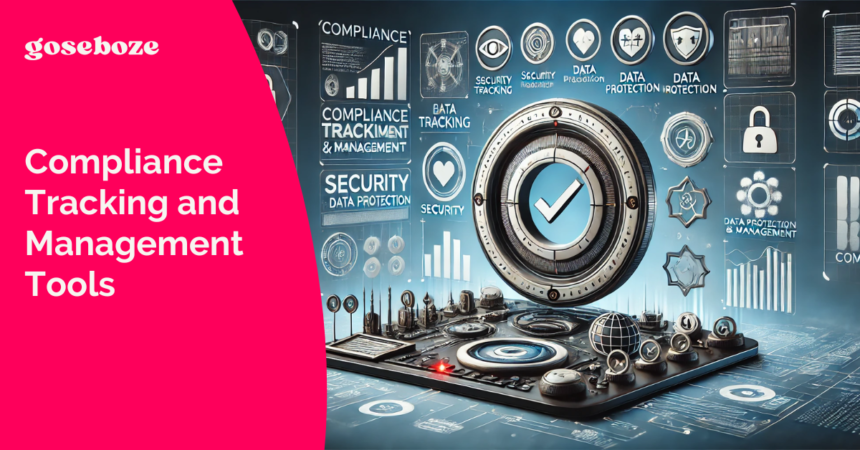In the world of business today, it’s vital for companies to stay on top of regulatory compliance standards. Using tools for tracking and managing compliance is key to ensuring that businesses follow industry regulations, laws, and internal guidelines. Compliance management software and tools are valuable in simplifying processes, minimizing the chances of non-compliance, and boosting effectiveness.
The Significance of Compliance
Adhering to regulations isn’t just about obeying guidelines—it’s also crucial for protecting a company’s image and maintaining trust with stakeholders. Moreover, a compliance tracking and management tool helps avoid legal repercussions and financial setbacks that can harm credibility in the long run.
Essential Aspects of Compliance Software
Today’s compliance software is packed with tools aimed at making it easier to follow regulations effectively and hence, it is a must-have software. Important functions include monitoring, real-time reporting, risk evaluation, and document organization. By incorporating these tools, companies can effectively handle compliance needs, promptly spot risks, and ensure ongoing enhancement.
Automated Surveillance
Automated surveillance is a critical aspect of compliance tools due to its effectiveness in detecting violations and promptly notifying users of any irregularities. This proactive approach assists in resolving issues before they escalate into significant concerns that disrupt daily operations.
Up-to-the-Minute Updates
Organizations benefit from real-time reporting, which keeps them informed about their compliance status at all times. The detailed reports generated by these tools provide insights into compliance metrics and trends, highlighting areas that require attention. Access to up-to-date data empowers decision-making by facilitating informed measures.
Evaluation of Risks
Organizations utilize risk assessment tools to evaluate compliance risks by analyzing factors like regulatory updates and operational processes. This helps pinpoint vulnerabilities effectively and prioritize resource allocation.
Read Also: 5 Must-Have Software Even If You’re Just Surfing the Internet
Managing Documents
Maintaining compliance records requires document management to ensure adherence to regulations and standards. Compliance tools provide a centralized hub for storing and managing documents, making it simple to access vital information for audits and regulatory assessments, thereby streamlining the verification process.
Advantages of Using Tools to Ensure Compliance
Utilizing tools for monitoring and managing compliance offers a range of benefits that extend beyond merely meeting regulations. They also enhance the overall performance of an organization.
Increased Productivity
Streamlining compliance procedures reduces workloads, conserves time, and optimizes resources. This allows employees to focus on critical assignments instead of being bogged down by monotonous monitoring tasks, ultimately resulting in heightened productivity.
Minimized Chance of Non-Compliance
By monitoring operations and providing timely notifications, compliance tools can significantly reduce the chances of failing to adhere to guidelines. Companies can swiftly address issues, avoiding fines and protecting their reputation.
Enhanced Decision-Making Abilities
Having compliance data at your disposal allows leaders to make informed decisions, spot patterns, and evaluate potential risks. This insightful approach aids in formulating long-term strategic plans.
Simplified Inspection
Compliance tools simplify the preparation for audits by organizing and managing all required documents efficiently. Access to precise records streamlines the audit process and reduces the time and energy needed for compliance checks.
Selecting the Appropriate Compliance Solution
When choosing the right compliance tool for your organization’s needs, consider what your organization requires. Evaluate the available options and select a solution that best fits your goals.
Recognize Requirements
Start by pinpointing the company’s compliance needs. Keep in mind aspects such as industry rules, internal protocols, and specific areas of compliance that require focus. This step will help you identify a tool that can effectively address those needs.
Assess Features
Evaluate the capabilities of compliance software options to make an informed decision based on features such as automated monitoring, real-time reporting, risk assessment, and document management. Comparing features will aid in making a well-informed choice.
Evaluate Integration Potential
When assessing compliance tools, it’s essential to consider their compatibility with existing systems and operations. A harmonious integration improves performance by streamlining data transfer processes and minimizing the need for adjustments.
Ease of Use
Choose a user-friendly interface, as a complicated system can discourage use and limit effectiveness. Selecting an easy-to-use tool enhances user engagement and optimizes the benefits of monitoring compliance.
Conclusion
Compliance tracking and management tools are indispensable in today’s regulatory landscape. These systems offer numerous features that simplify compliance processes, reduce risks, and improve efficiency. By carefully selecting the right tool, configuring it properly, and providing adequate training, organizations can achieve robust compliance, safeguarding their operations and reputation. Investing in these technologies is not just a regulatory requirement but a strategic move toward sustainable success.








